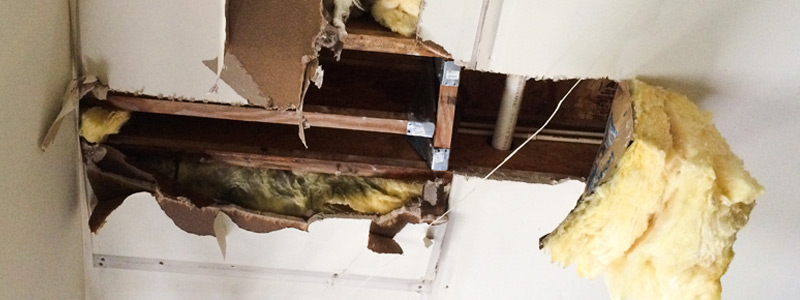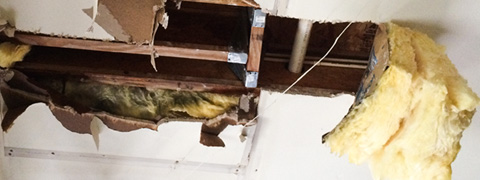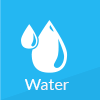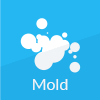




Water Damage Restoration Guide for Washington DC
There is no questioning the fact that incurring water damage in your home can be a huge headache. The strain from having a damaged home can lead to a whole host of psychosomatic effects, including irritability, depression, and feelings of hopelessness. However, it doesn't have to be that way.
If you are looking for a way to fully restore your flood-damaged Washington DC home, there are plenty of flood restoration companies that would be happy to help. Here are some things you need to know about the process:
Flood damage restoration often has to be tailored to the home or general area.
There are many things an expert will have to keep in mind. First of all, relative humidity in a home is often a result of a concealed leak within the home. Usually, the air will feel "clammy."
Water damage restoration experts will keep the high DC humidity and nearby waterways in mind as well.
After this, there are several steps a flood damage restoration professional will follow:
Inspecting The Area
A thorough inspection is always necessary for the first steps in the restoration process. One of the main things a professional will do is pick an appropriate class and category for the flood damage.
Clean Water Damage
This refers to a flood consisting of water that is not a significant health threat to humans. Examples such as a washing machine overflow, a flood from a burst pipe, or water from a sink are all common situations a flood restoration professional will encounter.
Gray Water Damage
This is water damage that poses either a chemical, biological, or physical risk to humans. They carry the potential to create microorganisms. Certain types of toilet water and the dark discharge from dishwashers and washing machines are two examples.
Black Water Damage
This is by and large the worst kind. This is water that already has harmful microorganisms in it. Water from septic systems and gray water that has remained stagnant are two of the most common culprits.
Classes of Water Damage
A certain class will be assigned to the water damage, wholly dependent on the rate of evaporation and the rate of porosity.
Water deemed Class 1 will usually have a slow rate of evaporation and will only affect a small portion of the room.
Class 2 water damage has a higher rate of evaporation and will affect an entire room and up to two feet of your walls.
Class 3 water damage comes from water that has affected the whole entire structure, including floors and walls. This class has a very quick rate of evaporation. A good water restoration specialist will want to know the evaporation speed of the water in order to facilitate the drying process.
Appropriate Removal Procedures
The next step in the flood restoration process is to remove certain items in your home. This is a necessary evil for a number of different reasons. First of all, there are times that the drywall and studs will need to be taken out of the home simply because the floodwaters will introduce bacteria into these items that cannot be removed.
This step cannot be ignored because this bacteria will simply just permeate the air. This is why sometimes a total interior replacement of floors, shelves, furniture, clothing, ductwork, and even HVAC systems will be needed.
Drying
All standing water must be thoroughly vacuumed up. After that, drying and dehumidifying the surrounding air with special tools will take place. If the property were left to dry on its own, it would take weeks or even months, and mold growth would surely begin. Professional drying techniques assure that it will dry more quickly.
Cleaning
All personal belongings will need to be cleaned with an air scrubber to ensure that no harmful bacteria are still present in these items.
Restoration
This is the final and most important step. This usually means that certain things must be replaced. This often means drywall and insulation, either just a few panels or even the whole entire home. In older Washington D.C. homes, there is a possibility of being exposed to toxic substances such as asbestos.
Wearing the Appropriate Clothes
Depending upon the category of flood damage, most of the time the flood restoration professional will have to wear the appropriate attire.
If they are dealing with sewage or "gray water", they will often have to wear boots, coveralls, a protective suit, and a full protective mask while they are restoring your property. It's a tough job, but these professionals will do everything in their power to help you get your life back to normal as soon as possible
Using the Appropriate Tools and Supplies
An important part of the inspection process would be using the right tools and supplies. For the cleanup process, items such as air moving or drying equipment, dehumidifiers, air scrubbing machines, HEPA vacuums, and odor control equipment would be needed at the very minimum.
Inspection tools will require several important items:
Penetrating Meters
These items consist of pins and a camera used to examine an interior wall.
Hydro Sensors
These items will determine if water damage has spread.
Thermo-hydrometers
These machines examine the surrounding area to see if it is conducive to drying.
Slide hammers
These are used to inspect the wood sub-floor
Moisture tapping machines
These investigate just how widespread the moisture is throughout the structure.
Conclusion
In conclusion, here is a step-by-step guide to help you fully understand the flood removal process:
- Inspection
- Examine the affected area.
- Pick an appropriate class for the water (i.e. "clean water", "gray water", or "black water.")
- Pick an appropriate class for the water damage (i.e. Class 1: Slow rate of evaporation; only affecting part of the room; Class 2: higher rate of evaporation, affects an entire room; Class 3: quick rate of evaporation; affects the whole entire structure.)
- Appropriate Removal Procedures
- Remove furniture and clothing.
- Remove shelves.
- Remove drywall and studs.
- Remove ductwork.
- Remove HVAC systems.
- Drying
- Vacuum up standing water.
- Dry and dehumidify the surrounding area with special tools.
- Cleaning
- Clean all personal belongings with an air scrubber.
- Restoration
- Reinstall all of the drywall.
- Use the appropriate tools and supplies (entire job)
Clean-up tools
- Air moving or drying equipment
- Dehumidifiers
- Air scrubbing machines
- HEPA vacuums
- Odor control equipment
Inspection tools
- Penetrating meters (pin and camera to inspect the interior wall)
- Hydro sensors (to determine if water damage has spread)
- Thermo-Hydrometers (In order to examine the surrounding area)
- Slide hammers (used to inspect the wood sub-floor)
- Moisture tapping machines (investigate just how widespread the moisture is throughout the structure)
Wearing appropriate clothing
- Boots
- Coveralls
- Protective Suit
- Protective face mask

Call
























